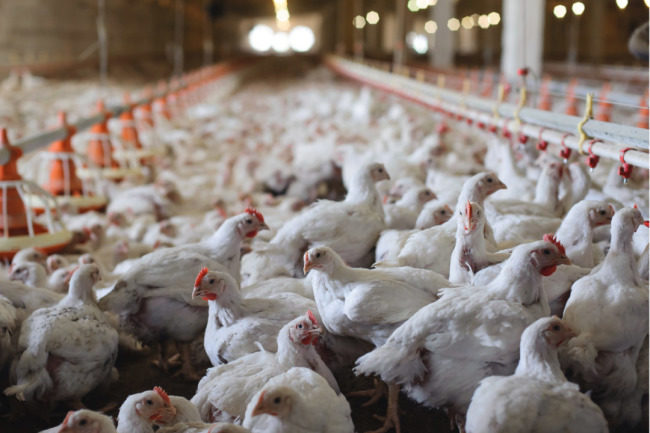DENVER — Noting the decreased spread of the highly pathogenic avian influenza (HPAI) in recent months, a report from CoBank’s Knowledge Exchange lays out the following repercussions for the US poultry industry. According to the report, the industry will have a more difficult time recovering from the widespread outbreak now than it did from the last major HPAI spread in 2014 and 2015.
As a result of the 2014-15 HPAI outbreak, 43.2 million laying hens and 7.3 million turkeys were depopulated, costing US producers more than $3.3 billion. Following the outbreak, US poultry production grew an average of 2% per year from 2016 to 2020.
Despite a slightly lower number of depopulated birds — just over 40 million — Brian Earnest, lead animal protein economist with CoBank, expects a slower recovery this time around with today’s higher feed, labor and production costs.
“A smaller national layer flock means a smaller egg supply in coming months, higher egg prices, and fewer eggs consumed,” he said.
US broiler meat exports remain fairly favorable despite the HPAI impact, with the current 12-month total within 1% volume from the previous year.
Egg and turkey segments are taking the greatest hit. According to the report, egg prices have almost tripled, and turkey breast meat has risen 60% to record highs. While outbreaks appeared this year in US turkey flocks, turkey breast meat in cold storage was dwindling to a low of 43 million lbs in April. Safety stocks began building again slightly during May.
“Poultry supplies were already under pressure to begin 2022, so participants were already expecting higher prices from strong animal protein demand this spring and summer,” Earnest said. “However, the burden of the HPAI supply shocks exacerbated already tight market conditions, sending values skyrocketing.”
On the bright side, trade was not as affected this year as it was from the 2014-15 outbreak. China shut its border to US poultry trade immediately after the 2014-15 outbreak and did not reopen until 2019 with the US-China Phase One trade deal.
“Fortunately for US poultry exporters, the current world views on HPAI trade restrictions have relaxed since the last major outbreak in 2014 and 2015,” Earnest said. “Rather than a blanket ban, trade partners set new restrictions at county, state or regional levels because outbreaks had become commonplace globally, and not coincidentally, because politicians across the globe were concerned about rapidly escalating food prices after Russia’s invasion of Ukraine.”
A European Food Safety Authority study suggested that HPAI detections will occur year-round.
“Undoubtedly, this won’t be the last HPAI outbreak the US commercial poultry sector will have to manage,” Earnest said. “As HPAI typically occurs during the wild bird migratory season and carries to commercial flocks through dust particles, fecal matter, or other foreign objects, stamping out HPAI is particularly complicated – especially in open-air housing systems commonly used in the turkey sector.”


